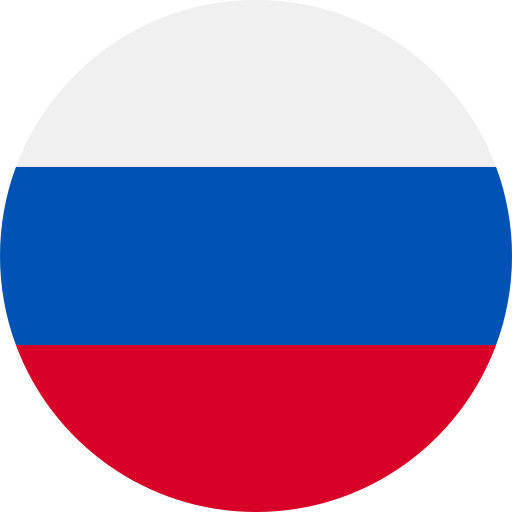Key Takeaways
- Dialect Diversity: Russian dialects differ significantly between Siberia and Europe, influenced by local history, geography, and cultural interactions.
- Phonetic Variations: Siberian dialects often feature softer consonants, while European speakers may have more pronounced vowel sounds, creating distinct auditory experiences.
- Unique Vocabulary: Siberian Russian incorporates terms from indigenous languages like Evenki and Yakut, whereas European dialects include expressions tied to local customs and history.
- Geographic Isolation: Natural barriers in Siberia contribute to the development of unique linguistic traits due to community isolation; urban centers in Europe tend to favor standardized forms of Russian.
- Cultural Influences: Historical events and local traditions shape both regions’ dialects, with grammar nuances reflecting community identities and social dynamics.
- Appreciation of Complexity: Understanding these differences enhances appreciation for the rich tapestry of the Russian language across its diverse landscapes.
Ever wondered how Russian dialects differ between Siberia and Europe? These two regions not only boast stunning landscapes but also rich linguistic diversity that reveals much about their unique cultures. While you might think of Russian as a single language, the reality is far more complex.
Overview of Russian Dialects
Russian dialects exhibit significant variation across regions, particularly when comparing Siberia and Europe. Each dialect reflects local history, geography, and cultural influences.
Key Characteristics of Dialects
- Phonetic Differences: Pronunciation varies widely. For example, Siberian dialects often feature softer consonants compared to their European counterparts.
- Vocabulary Variations: Unique words and phrases are prevalent in different areas. Siberians may use terms derived from indigenous languages that aren’t found in European Russian.
- Grammar Nuances: While the basic structure remains similar, some grammatical forms differ regionally, affecting verb conjugation or noun declension.
Geographic Influence
- Natural Barriers: Mountains and rivers create isolation, leading to distinct linguistic evolution in remote areas.
- Urban vs Rural Dynamics: Urban centers in Europe tend to adopt a more standardized form of Russian due to media influence, while rural communities maintain traditional dialectal features.
Cultural Context
- Historical Events: The impact of historical migrations and settlements shapes dialect development over time.
- Local Traditions: Folklore and regional customs enrich language with unique expressions not commonly understood outside their origin areas.
Understanding these elements is crucial for anyone interested in the rich tapestry of the Russian language as it exists across diverse landscapes from Siberia to Europe.
Russian Dialects in Siberia
Siberian Russian dialects exhibit significant diversity, shaped by the region’s vast geography and cultural influences. These dialects reflect a blend of local traditions, historical contexts, and interactions with indigenous languages.
Geographic Distribution
Siberia’s sheer size contributes to the wide variety of dialects. You’ll find distinct linguistic traits across different areas, from the western parts near the Ural Mountains to the eastern coast along the Pacific Ocean. Natural barriers such as mountains and rivers often isolate communities, fostering unique language developments. Urban centers like Novosibirsk may feature more standardized Russian due to external influences, while rural areas maintain traditional speech patterns rich in local vocabulary.
Unique Linguistic Features
Unique linguistic features characterize Siberian dialects. One notable aspect is phonetic variation; you might notice softer consonants when compared to European counterparts. Vocabulary also stands out, with many terms borrowed from indigenous groups like the Evenki or Yakuts, enriching everyday conversation. Grammatical differences arise too—verb conjugation can vary significantly based on regional usage. These elements create a fascinating tapestry that encapsulates life in Siberia and its diverse cultural heritage.
Russian Dialects in Europe
Russian dialects across Europe showcase rich linguistic diversity. These variations reveal distinct cultural influences, historical contexts, and geographical features that shape how Russian is spoken.
Geographic Distribution
In Europe, Russian dialects spread primarily through urban centers and rural areas. Major cities like Moscow and St. Petersburg exhibit a more standardized form of the language due to increased interaction with diverse populations. In contrast, rural regions maintain unique dialect characteristics influenced by local history and culture. This geographic distribution results in a wide variety of accents and expressions throughout European Russia.
Unique Linguistic Features
Unique linguistic features define European Russian dialects. Phonetic differences often emerge; for instance, speakers from Northern regions may pronounce certain vowels more distinctly than those from Southern areas. Vocabulary also varies significantly; local expressions or idioms can differ even within close proximity. Grammatical structures occasionally exhibit regional nuances as well, particularly in verb conjugation patterns that reflect local speech habits.
These elements combine to create a vibrant tapestry of expression among Russian speakers in Europe, enriching the language’s overall character while reflecting individual communities’ identities and histories. Understanding these dialectal distinctions enhances appreciation for the complexities of the Russian language as it thrives across varied landscapes.
Comparative Analysis of Dialects
Russian dialects exhibit significant variations between Siberia and Europe, reflecting diverse cultural histories and geographical influences. These distinctions enhance the understanding of how regional differences shape language.
Phonetic Differences
Phonetic variations stand out prominently across Russian dialects. In Siberia, you’ll notice softer consonant sounds that create a distinct auditory experience compared to European counterparts. For instance, speakers in Siberia often use palatalized consonants more frequently than those in urban areas like Moscow. Vowel pronunciation also varies; Northern speakers may articulate vowels with more clarity than Southern speakers, who might favor a more relaxed approach. These phonetic traits not only influence comprehension but also contribute to the unique identity of each region’s speech.
Lexical Variations
Lexical diversity adds richness to Russian dialects, with unique vocabulary shaping everyday conversation. In Siberia, terms borrowed from indigenous languages like Evenki and Yakut showcase this influence, introducing words that describe local flora and fauna or traditional practices unfamiliar elsewhere in Russia. Meanwhile, European dialects feature expressions deeply rooted in local culture and history—think idioms or phrases that resonate within specific communities. For example, while the standard term for «to eat» is «есть,» you may encounter regional slang that captures local flavor and context.
These lexical variations don’t just enrich conversations; they symbolize the cultures embedded within each region’s linguistic tapestry. By recognizing these differences, you gain a deeper appreciation for the complexities of Russian as it flows through both Siberian expanses and European landscapes.
Cultural Influences on Dialects
Cultural influences significantly shape the Russian dialects found in Siberia and Europe. Each region’s history, traditions, and interactions with various ethnic groups contribute to its unique linguistic features.
Siberian dialects often reflect the rich tapestry of indigenous cultures. Terms borrowed from languages like Evenki and Yakut enrich the vocabulary, showcasing local customs and ways of life. You might notice softer consonants in pronunciation, revealing a distinct phonetic character that sets it apart from European standards.
In contrast, European dialects evolve through historical events such as trade routes and migrations. The influence of neighboring countries introduces lexical variations that make each area unique. For instance, urban centers like Moscow feature a more standardized Russian due to diverse populations blending their languages over time.
Geographic factors also play a role in shaping these dialects. Natural barriers can isolate communities, allowing them to develop distinct speech patterns influenced by local culture. In rural regions of both Siberia and Europe, traditional expressions thrive alongside modern language shifts.
Grammatical structures further illustrate cultural nuances. Variations in verb conjugation or noun declension may reveal insights into regional identities or social dynamics within communities.
Overall, understanding these cultural influences enhances your appreciation for the complexities of Russian dialects across Siberia and Europe. Each variation tells a story rooted in the experiences of its speakers, enriching your knowledge about this fascinating linguistic landscape.
Conclusion
Exploring the dialects of Russian in Siberia and Europe reveals a rich tapestry woven from history culture and geography. Each region offers unique linguistic features that reflect its distinct identity.
Siberian dialects shine with influences from indigenous languages showcasing soft consonants and varied vocabulary. Meanwhile European dialects express their own histories through diverse phonetic patterns and grammatical structures.
Understanding these differences not only enhances your appreciation for the Russian language but also connects you to the stories of its speakers. Whether you’re drawn to the vast expanses of Siberia or the vibrant cities of Europe each dialect invites you to discover more about cultural heritage and regional diversity.
Frequently Asked Questions
What are the main differences between Siberian and European Russian dialects?
The primary differences lie in phonetics, vocabulary, and grammar. Siberian dialects often feature softer consonants and unique terms from indigenous languages, while European dialects exhibit variations in vowel pronunciation and local expressions influenced by their historical contexts.
How do geographical factors influence Russian dialects?
Geographical features such as mountains and rivers create natural barriers that isolate communities, leading to distinct speech patterns. Urban areas tend to have more standardized language due to diverse populations, while rural regions retain traditional dialect characteristics.
Why is there a variety of vocabulary in Siberian dialects?
Siberian dialects incorporate words from indigenous languages like Evenki and Yakuts. This linguistic richness reflects the unique cultural influences present in the region’s history and interactions with various ethnic groups.
Are there grammatical differences between Siberian and European Russian?
Yes, there are notable grammatical nuances between the two. These include variations in verb conjugation patterns and noun declension that reflect regional usage specific to each area’s cultural and historical context.
How does urbanization affect Russian dialects?
Urbanization tends to lead to a more standardized form of Russian as people from different backgrounds interact. In cities like Moscow or Novosibirsk, this results in less linguistic variation compared to rural areas where traditional speech patterns are preserved.
What role do cultural influences play in shaping these dialects?
Cultural influences are significant; they shape language through history, traditions, trade routes, and migrations. Each regional dialect tells a story about its speakers’ experiences reflecting their identity within broader society.
Are phonetic variations prominent across different regions of Russia?
Yes, phonetic variations are pronounced among regions. For instance, Siberian speakers may use palatalized consonants differently than those from Europe. These distinctions create a diverse auditory experience when listening to various Russian dialects.
Can understanding these dialectal differences enhance appreciation for the language?
Absolutely! Recognizing the complexities of these Russian dialects enriches our understanding of the cultural stories behind them—each variation offers insights into local identities shaped by geography and history.







